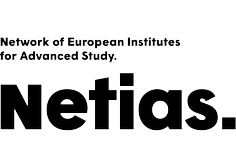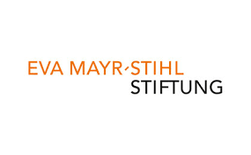Prof. Dr. Joseph Bernstein
Algebraic Geometry
External Senior Fellow
June - August 2018
CV
Education
- 1968 - 1972 Ph.D., Dept. of Mathematics, Moscow State University
- 1963 - 1968 M.Sc., Dept. of Mathematics, Moscow State University
Academic and Professional Experience
- October 2014 - present Professor Emeritus, School of Mathematical Sciences, Tel Aviv University, Israel
- September 1993 – September 2014 Professor, School of Mathematical Sciences, Tel Aviv University, Israel
- January 1983 - August 1993 Professor, Department of Mathematics, Harvard University, USA
- 1971 - 1978 Junior Researcher, Laboratory of Mathematical Methods in Biology, Moscow State University, USSR
Long term visiting positions
- July - December 2013 Member, Max Planck Institute for Mathematics, Bonn, Germany
- September - December 2010 Member, Institute for Advance Studies, Hebrew University, Israel
- September - December 2004 Visiting Professor, Courant Institute, New York University, USA
- September - December 2001 Visiting Professor, Department of Mathematics, University of California, Berkeley, USA
- October 1991 - June 1992 Visiting Professor, Department of Mathematics, Tel Aviv University, Israel
- October 1987 - July 1988 Member, Institute for Advance Studies, Hebrew University, Israe
- September - December 1985 Member, Institute for Advance Studies, Princeton, USA
- August 1981 - December 1982 Visiting Professor, Department of Mathematics, University of Maryland, USA
- May - August 1981 Member, IHES Bures-sur-Yvette, France
Selected Publications
- J. Bernstein, A.V. Zelevinsky. Induced representations of GL(n) over p-adic field. Functional Analysis and its Applications 10, No.3, 74-75 (1976)
- J. Bernstein, A.A. Beilinson, P. Deligne. Faisceux pervers. Asterisque 100, 3-171 (1983)
- J. Bernstein, Representations of p-adic groups. Lectures by Joseph Bernstein. Written by Karl E. Rumelhart. Harvard University. (Fall 1992).
- J. Bernstein, A. Reznikov. Subconvexity bounds for triple L-functions and Representation Theory, Annals of Mathematics, no. 172 (2010), 1679-1718.
- J. Bernstein Stacks in Representation Theory. arXiv:1410.0435v3 [math.RT] 12 May 2016
FRIAS Research Project
Soergel's conjecture and Langlands’ correspondence for p-adic groups
Program: Cohomology in Algebraic Geometry and Representation Theory.
During my stay at FRIAS I am planning to work on the following interrelated projects.
1. My main point of interest are Soergel's conjectures on representations of real and p-adic groups. Let M(G) be the category of representations of some group G. Usually we consider some finite direct summand M of this category. Soergel's conjectures describe the structure of this category in terms of the Langlands' dual group G.
(i) One of the main features of these conjectures is an idea that behind the category M there is a graded category N that is Koszul; the Koszul dual of this category can be expressed in terms of the dual group G. I have worked out some examples that convinced me that probably this category N in fact should be filtered, not graded. I have some ideas how to construct this category for a real group G. I will try to work out this construction and generalize it to include p-adic groups.
(ii) In case of p-adic groups one can consider the category M corresponding to the principal block. It can be described in terms of the affine Hecke algebra H. Algebra H has natural _ltration. Lusztig has introduced a graded version of this algebra Hg. He also showed that categories of representations of algebras H and Hg are equivalent. So probably in Soergel's conjectures we have both _ltered category and graded category. It would be extremely interesting to understand these structures in this case and also in general situation.
(iii) Recently I realized that the notion of Langlands dual group should be slightly modifed. It would be important to use this new construction in precise formulation of Soergel's conjectures.
2. The Koszul duality that appears in Soergel's conjectures has many different applications. For me the most interesting are its applications to Grothendieck duality theory in Algebraic Geometry. I am planning to discuss the Koszul duality and its applications in Algebraic Geometry with Professor Soergel.





